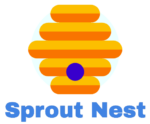Ever pondered how to produce breathtaking 3D images and animations on the internet? Well, nowadays, it is feasible! I will be introducing Three.js to you in this blog article!
Read More: Simplify Three.js coding
Three.js: What is it?
A robust JavaScript toolkit called three.js may be used to create 3D animations and visuals for the web. You may develop a wide range of 3D content using Three.js, such as virtual reality experiences, games, and stunning visualizations. In addition to creating and importing 3D models from blender or other 3D modeling programs into our apps, we can also animate and apply materials and textures to our creations. WebGL is the foundation upon which Three.js is built, offering an intuitive API that frees developers from the burden of handling the intricate WebGL code, letting them concentrate on building 3D scenes and objects.
A Brief Overview of WebGL
WebGL speeds up the rendering of 3D graphics by using the GPU power of a user’s computer. It enables programmers to work inside a web browser to design 3D models, apply textures, and carry out intricate animations.
Comprehending Fundamental Ideas
I hope you now have a better understanding of three.js and its capabilities. Let’s now build a basic three.js application. However, there are a few terms like scene, camera, object, and renderer that we must comprehend first.
Scene:
Thus, to begin with A sequence from Three. All of the objects, cameras, and lights that comprise our three-dimensional reality are included within js.
Camera:
In Three.js, a camera is required to observe your 3D scene. The location of the things you’re rendering in your scene is determined by the camera.
Object:
A 3D form or model that you wish to render in your scene is called an object in Three.js. It may be an intricate 3D model that you imported from a 3D modeling program like Blender or Maya, or it could be a straightforward geometric form like a cube and sphere.
The Renderer
Your 3D scene is really drawn by the renderer, specifically in one of your html DOM elements.
Setting up Three.js
Thus, we must first install Three.js before we can utilize it. Open your command prompt and type npm install — save three to start a new three.js project. Let’s move to a folder. I’m now within codewithmasood. Although installing the three.js package is recommended, you may also utilize Three Js by utilizing a CDN link. Next, a build tool like vite is required. Thus, just use this line to install vite as npm install — save-dev vite, and then use this command as npx vite to launch your three.js application.
Why is Three.js used?
Three.js is open source, therefore it’s simple to view the source code and comprehend how the code operates.
The majority of browsers are not supported when using WebGL for graphics, although Three.js is compatible with most browsers.
To run the code, no third-party plugin is needed.
The only two programming languages you need to deal with are JavaScript and, of course, HTML.
How Can Your Projects Use Three.js?
There are several different ways to include Three.js into projects; some are rather straightforward, while others need the inclusion of one or more of the following files:
3.js
3.min.js
three.module.js
